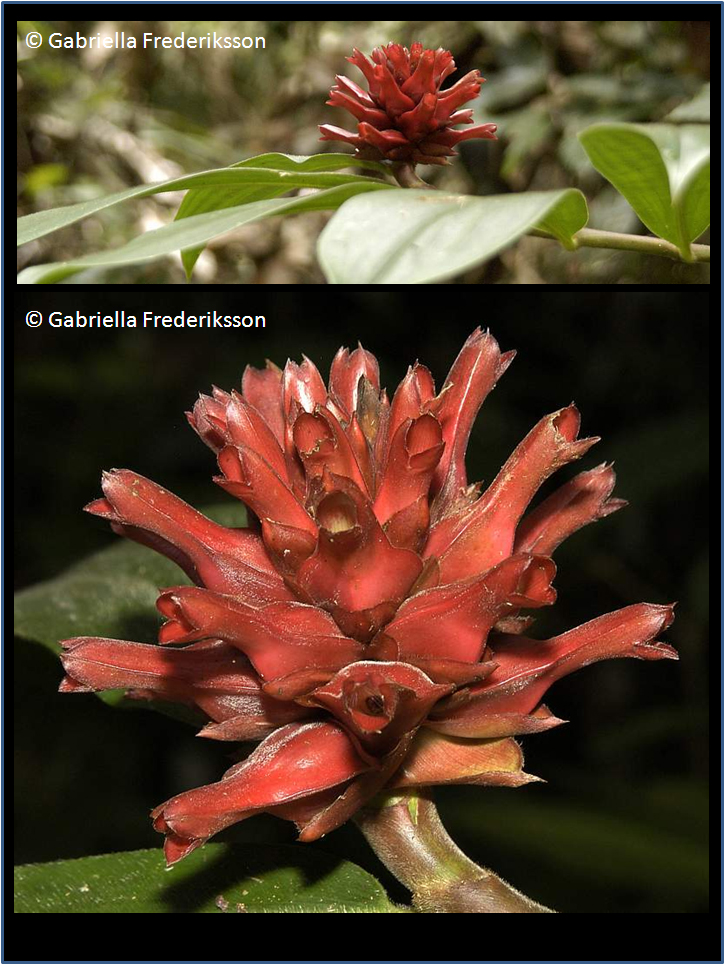Cheilocostus speciosus (J.König) C.Specht Taxon 55: 159 (2006)
Name referring to its beautiful flowers.Synonyms
Amomum arboreum Lour.
Amomum hirsutum Lam.
Banksea speciosa J.König
Banksia speciosa Koenig
Cardamomum arboreum (Lour.) Kuntze
Costus angustifolius Ker Gawl.
Costus argyrophyllus Wall. [Invalid]
Costus crispiflorus Stokes
Costus foeniculaceus Noronha
Costus formosanus Nakai
Costus glaber (K.Schum.) Merr.
Costus glabratus Rchb. [Illegitimate]
Costus hirsutus Blume
Costus lamingtonii F.M.Bailey
Costus loureiroi Horan.
Costus nipalensis Roscoe
Costus potierae F.Muell.
Costus sericeus Blume
Costus speciosus (J.König) Sm.
Costus speciosus var. angustifolius Ker Gawl.
Costus speciosus var. argyrophyllus Wall. ex Baker
Costus speciosus var. dilnavaziae M.R.Almeida & S.M.Almeida
Costus speciosus var. formosanus (Nakai) S.S.Ying
Costus speciosus var. glaber K.Schum.
Costus speciosus var. hirsutus (Blume) K.Schum.
Costus speciosus var. hirsutus Blume
Costus speciosus var. leocalyx Nakai
Costus speciosus var. sericeus (Blume) K.Schum.
Costus spicatus var. pubescens Griseb.
Costus vaginalis Salisb.
Hellenia grandiflora Retz.
Kaempferia speciosa (J.König) Thunb.
Planera speciosa (J.König) Giseke
Tsiana speciosa (J.König) J.F.Gmel.
Description
Herb with one row of spirally arranged leaves along a spirally growing stem. The flowers form on red 10 cm cone-shaped bracts,
with several 2 in (5 cm) pure white crinkled flowers protruding from each cone. The flowers look like crepe paper - thus the
common name of crepe ginger. After the flowers fade away, the attractive red cone-shaped bracts remain.
Ecology
Growing on roadside ditches and low lying areas in the forest understorey, up to 1400 m elevation. Often reproducing vegetatively
via underground rhizomes. Seeds dispersed by birds.
Uses
Medicinal (India) and ornamental (most other parts of the world). The plant has many historical uses in Ayurveda, where the rhizome
has been used to treat fever, rash, asthma, bronchitis, and intestinal worms. It is mentioned in the Kama Sutra as an ingredient in
a cosmetic to be used on the eyelashes to increase sexual attractiveness.
Distribution
Pan-tropical, but originally from SE Asia and Peninsular Malaysia to New Guinea and western Pacific.
Local names
Crape ginger (English), Isebsab (Palauan), Jom Lakhuti (Assamese), Keu or Kemuk or Keumul (Bengali), Keukand (Hindi), kostam (Tamil),
Malay ginger (English), Pakarmula (Gujarati), Pushkarmula (Marathi and Sanskrit), Thebu (Sinhala).
